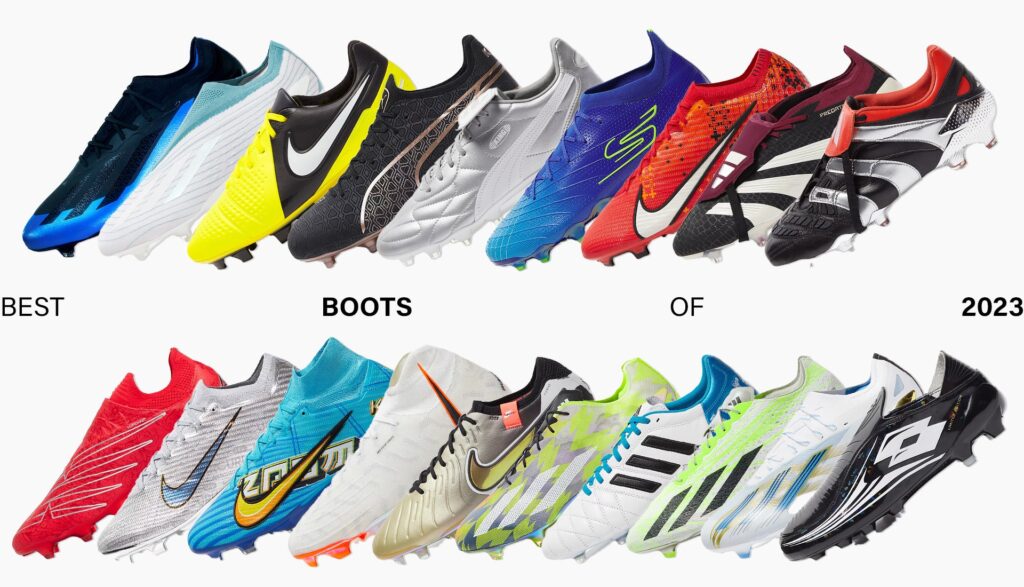General Tips for Buying Football Boots: A Sports Podiatry Perspective
The selection of the correct boot is crucial for the football/soccer athlete, and can be the difference between injury and subpar movement or comfort and optimised performance. The boot interacts with the foot (player), ball and the pitch, as such there are a multitude of factors to consider. As a sports podiatrist, I’ve witnessed how the right pair of shoes can make all the difference in terms of performance, comfort, and injury risk reduction. In this blog post, I’ll share some considerations for purchasing the right pair of football boots to keep your kicking goals on the pitch.
- Understand Your Foot Structure and Shape:
Before you start shopping for football, it’s essential to know your foot type. The shape of the boot should be anatomically appropriate to the individual’s foot characteristics. There are several important considerations:
-
Lumps and bumps: If you have a prominent bump on your achilles – sometimes known as a Haglund’s deformity If may require a boot with a suitable shape at the heel or use of a cobbler to stretch the shoe to avoid pressure and blisters/pain
-
Width: note where your feet are widest, if you normally need a 2E or 4E width there are certain models that cater to this.
-
Internal support: If you require insoles in your boots there needs to be enough depth and space to be comfortable

- What surfaces are you playing on and Sole Plate/Stud configuration:
Broadly speaking there are several types of boots and their respective sole plates:
Firm/Hard ground (FG), Soft ground (SG), Artificial ground/Turf (AG), Mixed ground/Indoor (MG)
Each will differ in their sole hardness and stud configuration based on the playing surface. It goes without saying that were an AG setup on SG will not be ideal.


Additionally, there are several stud types and configurations, with pros and cons for each.
Soft Ground: A long stud is often suitable in this case and they can be screw-in, and a variety of materials (nylon, aluminum). This would be ideal in wet, muddy conditions where extra grip is required. The versatility and interchangeability means dependant on the conditions they can be adjusted as needed is more or less traction is desired or when the surface becomes softer or firmer.
Screw-ins can also be useful as you can adjust the length dependant on the conditions, longer might be better on a wetter day, the disadvantages of which can be a low number of studs which means increased pressure in a small number of contact points, and also if the wrong stud is selected this can keep the foot too high off the ground and increase injury risk.
Firm Ground: Generally made with rubber and shorter than SG boots, they are usually longer than Hard ground stud formations. Although not ideal on soft ground during wet and muddy conditions, they can be used. This stud pattern is organised for best performance on hard grass surfaces (non-muddy natural grass pitches) and is considered a versatile all-rounder for Australian weather conditions. There are often more contact points/studs than SG boots an dso the load through the foot is more evenly distributed, and faciliate good grip and release.
The balancing of good grip to the playing surface, without sticking and failing to release when pivoting or pushing-off is key. A major cause of injury is the sticking and failure of studs to release which is linked to high ankle and ACL sprains.
Hard Ground: Low profile stud height and numerous individual studs will mean a more stable boot and is becoming the increasingly more common playing surface for most football athletes. This will translate into less risk of rolling an ankle, and more stability. It also enables more even load distribution when running on hard surfaces, and spreading it more evenly throughout the whole foot. This lower stud height means it is a more stable boot on hard surfaces and less risk of rolling your ankle. Excellent traction will still be provided, without sticking and potentially causing injury.
4. Consider Your Position:
Are you a goalkeeper or midfielder? Are you streaking down the wing or attacking the goal with lots of sharp bursts of speed? Each player on the pitch will be moving a different way and almost be playing a different game depending on their position and playing style. For example, a midfielder may need more cushioning and support than a goalkeeper due to their running loads and in-game demands.
5. Prioritize Comfort and Try on with your game/training socks:
Comfort should be your top priority when buying footwear. Try on several pairs and walk around in them to assess their fit. Pay attention to any pressure points, rubbing, or discomfort. Your shoes should feel comfortable from the moment you put them on. Make sure you bring your game socks which are likely much thicker than regular socks.
6. Allow for Toe Room:
Football boot fit is often much tighter and more conforming than a running shoe, although your foot should not be numb after extended use and ther should be some ability for the upper material to allow room for some movement whilst protecting your toes and feet. Overly tight-fitting shoes can lead to discomfort and even toenail problems.
7. Female Specific Boots:
Generally speaking, female feet have unique anatomical differences from males. As such, if possible, selecting a boot from manufacturers such as Ida Sports which make football boots based on female feet will be more appropriate.

- Replace Worn-Out Boots:
Much like running shoes, most boots will only last a complete season and it is recommended to replace seasonally, even if they still look good on the outside. Worn-out shoes can lead to injuries due to reduced support and cushioning.
- Seek Professional Advice:
If you have specific foot concerns or conditions, consider consulting a sports podiatrist. They can provide expert advice on shoe selection, custom orthotics, and other interventions to address your unique needs.
Buying the right footwear is an investment in your foot health and overall athletic performance. By understanding your foot type, considering your sport or activity, and prioritizing comfort and support, you can make informed choices that keep your feet happy and injury-free. Remember, your feet are your foundation in sports, so take care of them with the right shoes. If you have specific concerns, don’t hesitate to seek guidance from a sports podiatrist who can provide personalized recommendations. Happy and healthy feet will keep you moving toward your athletic goals!

